By Laraine StephensScams and confidence men. From the telephone call that we receive just as we’re about to take that first mouthful of dinner, telling us that we owe the Tax Office $1400, to the message on our mobiles informing us that the bank has inadvertently short-changed us, it seems that scams have become a part of everyday life.
Fake websites, romance scammers, road tolls that we haven’t paid (supposedly), phoney people tried to ‘Friend’ us on Facebook (my latest was Johnny Depp!), Pyramid or Ponzi schemes which make money by recruiting new participants, identity fraud, as well as diets, remedies and treatments that claim to cure all manner of ills, are just some of the hurdles that we must navigate to keep our money (and our mental health) safe. The rise of social media has highlighted the problem, but when I researched the incidence of con men and women, and deceptive marketing used to sell or promote fraudulent products, I found a wealth of examples from the past, which served as inspiration for my latest offering in the Reggie da Costa Mysteries, Lies and Deception, which is set in Melbourne, Australia, in 1925. Jasper Fitzalan Howard is found stabbed to death in his room at The Hotel Windsor. Initially, the police identify him as a wealthy investor and a cousin of the Duke of Norfolk. However, while investigating the murder, Reggie da Costa, The Argus’s celebrated crime reporter, uncovers a web of lies and deception surrounding Howard’s carefully constructed façade. Jasper Howard is not whom he seems. Swindling wealthy businessmen whilst blackmailing their wives, Howard has attracted many enemies, giving Reggie a host of suspects for his murder. In my research I discovered that it was an American, William Thompson, after whom the term ‘confidence man’ was coined. Thompson would request that the target show confidence in the honesty of a stranger by handing over his watch. Of course, the victim never saw his watch again! And then there were the consummate salesmen, such as Victor Lustig, who sold the Eiffel Tower twice for scrap metal, and George Parker, who sold the Brooklyn Bridge to a tourist. Britain's most successful serial confidence trickster, Achilleas Kallakis, duped banks out of more than £750 million by pretending to be a Mayfair property baron. In Australia, Belle Gibson promoted herself as a wellness guru, claiming to cure her cancer with a mixture of diet, exercise and alternative medicine therapies. History is dotted with examples of confidence men and ‘snake oil’ salesmen who have exploited people’s trust, their gullibility and sometimes, their greed. Just a moment … I’ve received an email. Apparently, I’ve won $1,500,000 in a lottery. How’s that for good luck!!! I can claim it if I click on the link. Here goes … Laraine Stephens lives in Beaumaris, a suburb of Melbourne, Australia. She worked as a teacher-librarian and Head of Library for over 35 years. After retiring at the end of 2013, she became a writer of historical crime fiction. Apart from writing, she is an avid golfer, loves travelling, going to the football and playing Mahjong, and enjoys reading, restaurants and films. For five years she worked as a volunteer guide at the Old Melbourne Gaol. She is a member of Writers Victoria, Sisters in Crime (Australia), the Australian Crime Writers’ Association, the Historical Novel Society of Australasia, the International Thriller Writers and the Crime Writers’ Association of the United Kingdom. Laraine has a six-book contract with Level Best Books (USA). She has published four novels so far in The Reggie da Costa Mysteries: ‘The Death Mask Murders’, ‘Deadly Intent’, ‘A Deadly Game’ and ‘Lies and Deception’. https://larainestephens.com https://www.facebook.com/crimewriter3/
0 Comments
By Kathleen Marple Kalb “Marriage is a rotten deal for a woman.”
When Ella Shane says this to Gilbert Saint Aubyn, Duke of Leith, soon after they meet in the spring of 1899, she’s not flirting or exaggerating; she’s just stating a simple fact of 19th century life, at least from her point of view. She’s also giving the main reason it takes her three books, several murders, and a brush with death to decide to marry the Duke. (The wedding FINALLY comes in A FATAL RECEPTION, this April!) Marriage seems like prison to Ella, an Irish-Jewish Lower East Side orphan who’s clawed out an independent life and career as an opera singer specializing in “trouser,” male soprano, roles. It was certainly the end of legal freedom for most women at the time. Even in the late 19th century, when a woman married, she essentially ceased to exist as an independent person. The legal doctrine was called “femme couvert,” literally translated as “covered woman,” meaning the woman’s rights were covered by her husband’s power. You can see how that could lead to all sorts of trouble. All of a woman’s money and property, not to mention her person – and her children – were effectively under her husband’s control. She could earn money, but he decided how it was spent. She would bear the children and raise them, but they, too, were his property. Laws were starting to address the idea that married women might inherit or earn property of their own, but on the ground, men still had close to absolute power over their wives. By the late 1800s and early 1900s, divorce was just barely possible in particularly egregious cases of abuse or financial neglect – and men could ditch an unfaithful wife. But a woman could not expect to take her children with her if she left a bad marriage, even a horrifically abusive one. In less extreme cases, women just had to put up with the daily knowledge they weren’t real people in the eyes of the law, with little or none of the power a man had. A woman could do almost nothing without her husband’s consent – and that didn’t change for decades. There are plenty of women alive and well today who remember having to ask their husbands to co-sign on their credit cards. Women like Ella, single and making a living on her own, were rare at the time, but not unknown. Often, they lived with parents or family, as Ella does with her cousin Tommy, and often (based on advice writing and fiction of the time) the families vexed about having an independent woman around, and what to do with her. Until the late 19th century, a woman alone with money was usually a widow, and people knew how to handle that. She was taking care of her late husband’s estate for the benefit of her children and needed some legal and social room for the purpose. A single woman? Who knows what she might do? The one thing she certainly could do, though, is run her own affairs without anything more than advice from a man. Ella is well aware of that fact, and while she’s glad to have Tommy as friend, protector, and manager, she also prizes her independence. Independence she would have to unconditionally surrender in a match with any man, even a worthy one who is her equal. Maybe especially with a worthy man. If a clerk expects his wife to stop working and tend to his home, how much more would a powerful and well-off man expect? The answer, of course, is everything. Women with careers, whether on the stage or elsewhere, generally gave them up when they married. Ella has no interest in becoming a bird in a gilded cage. All of this is in the room when the Duke makes his reply to Ella’s comment: “Depends on who’s setting the terms.” The terms are what makes all the difference, and why Ella and Gil are now heading to the altar in A FATAL RECEPTION. After more than a year of negotiating their relationship and their future and finally coming to the conclusion that they can’t live without each other, the two have agreed on a marriage contract. It sounds a little cold for a couple madly in love, but it’s the only way for Ella to keep her freedom – and for Gil to show his respect for it. Marriage contracts had always been a part of aristocratic unions, but the diva and her duke make an unusual deal, keeping their property separate and giving her control over her career. Gil surrenders some of what might be his rights in the eyes of the law out of love and respect. As A FATAL RECEPTION opens, the couple has finally settled the property and legal matters, and now they’re navigating something almost as difficult: the transition from courting couple to spouses. While, of course, solving a crime or two. And it’s fair to say both are sure they’re getting a good deal. Kathleen Marple Kalb likes to describe herself as an Author/Anchor/Mom…not in that order. An award-winning radio journalist, she currently anchors on the weekend morning show at New York's #1 news station, 1010 WINS. She’s the author of several mysteries, historical and contemporary. Her short stories appear in anthologies and online and have been short-listed for Derringer and Black Orchid Novella Awards. She grew up in front of a microphone and a keyboard, working as an overnight DJ as a teenager in her hometown of Brookville, Pennsylvania…and writing her first (thankfully unpublished) novel at sixteen. When her son started kindergarten, she returned to fiction, and after two failed projects, some 200 rejections, and a family health crisis, found an agent for the third book – leading to a pandemic debut. In hopes of sharing what she’s learned the hard way, she’s active in writers’ groups including Sisters in Crime and the Short Mystery Fiction Society and keeps a weekly writing survival-tips blog. She, her husband, and their son live in Connecticut, in a house owned by their cat. by Mark Levenson If you want to know if your house is infested with demons, place fine ashes around your bed and in the morning the demons’ footprints will appear like chickens’ footprints, in the ash. If you want to see the demons, take the afterbirth of a firstborn female black cat, born to a firstborn female black cat, burn it in the fire, grind it and place it in your eyes, and you will see them.
That advice might sound like something out of the Brothers Grimm but it’s actually from the Talmud, the ancient, encyclopedic compendium of Jewish knowledge. The sages of nearly two thousand years ago clearly accepted demons—and more—as real enough to be the subject not just of lore, but of law. For example, putting out a light on the Sabbath was forbidden—but exceptions were allowed for one who was fearful of heathens, robbers, or an evil spirit. The distance one could walk on the Sabbath was also proscribed, with a limited extension allowed for one who was forced beyond the standard limit by factors including evil spirits. And one was forbidden to enter ruins because they were often inhabited by demons. Discovering all this during my continual study of Jewish texts was a revelation. I’d long loved fantasy – I’m old enough to have grown up not on Harry Potter but on The Lord of the Rings – and I’d also long identified with my Jewish faith. But the idea that these two, fantasy and Judaism, might mix seemed to me as unlikely as mixing chocolate and peanut butter (which is why I’m not today a multimillion-dollar candymaker). Of course, they do mix. Publishers have recently given us The Golem of Hollywood by Jonathan Kellerman and Jesse Kellerman, The Golem and the Jinni by Helene Wecker, and The Frozen Rabbi by Steve Stern, for example. Armed with this insight, I continued to read Jewish folktales (Howard Schwartz is the master reteller of these tales, if you’re interested) but in a new way: as rich ground upon which I might build a modest contribution of my own. That’s how my novel of Jewish fantasy, The Hidden Saint, came to be, inspired by bits of Torah and Talmud, rabbinic legends, folktales, and more. I knew I wanted my novel to be something other than a typical fantasy clothed in a veneer of Jewish characters and settings. That would have been mere costume Jewry. So I first had to answer another question: what makes Jewish fantasy Jewish? That took me back to those ancient Sages. What makes their acceptance of evil spirits, ghosts and demons so remarkable was that theirs was not a pagan world with competing supernatural forces, but a monotheistic world. They had to find a way to make a world governed by an ethical, benevolent God consistent with a world of demons and evil spirits. So did I. It’s a puzzle quite similar to the question of why evil exists. A traditional Jewish answer is that the presence of evil is necessary for man to choose good—and that free choice is central to the tradition. Demons and evil spirits also can be looked upon as a mechanism for evil, much as are disease, hurricanes, and wild animals. But the Sages didn’t just tolerate these supernatural creatures. They used them to validate principles that are linchpins of Judaism (and, in many cases, have become universal values). For example, the Sages say that one is not permitted to allow the ritual fringes of his shirt to drag along the ground in a cemetery, so as to avoid insulting the dead, who can no longer honor God by performing the commandment to wear them. That in turn leads to a discussion as to whether the dead are indeed aware of the living. To prove that they are, the Talmud relates a series of ghost stories. But these aren’t horror tales. The most elaborate of the set validates the important Jewish values of justice, care for orphans, and honor to parents. A trustee of orphans’ money has died and the money can’t be found, leading to accusations that the dead man stole it. His son goes to the cemetery to ask his father’s spirit what happened. The father assures him that he didn’t steal the money; he buried it for safekeeping and tells his son where to find it. The son also learns that his childhood friend, also deceased, has been denied entrance to heaven because of sins committed in this world. When the proud father tells his son how highly the son is regarded by heaven, the boy replies that on the strength of that regard, heaven must allow his friend to enter. And that’s what happens. It’s a ghost story, but a very Jewish one. It also inspired one of the set pieces of The Hidden Saint, a scene in a cemetery about spirits with very earth-bound grief to overcome. ****************************** Mark Levenson is the author of The Hidden Saint (Level Best Books, 2022). His Jewish-themed fantasy writing has won honors from The National Foundation for Jewish Culture and the American Jewish University, as well as a Union Internationale de la Marionnette-USA Citation of Excellence, an award founded by Jim Henson. Everyone who reads Charles Dickens’s unfinished novel, The Mystery of Edwin Drood, inevitably finds themselves wondering how the story would have concluded had the author lived to complete it. Did John Jasper, the sinister choirmaster of Cloisterham Cathedral, strangle Edwin, his rival for the hand of the delightful Rosa Bud, dump the body in the Sapsea Family Tomb and dose it with quicklime to hide his crime? Did the ruby-and diamond engagement ring in Edwin’s breast pocket survive the power of the corrosive and lead to the decomposed body’s identification and Jasper’s capture?
Dickens steers the reader towards believing that the answer to both questions is ‘yes’. Sir Arthur Conon Doyle, however, someone who should know what he’s talking about, claimed that the mystery writer’s task is to conceal the key idea and emphasize everything which makes for a different explanation. Was Dickens, then, ladening his text with red herrings to put the reader off the scent, so to speak? Did he have in mind an ending that would turn everything on its head? Of course, we’ll never know. Dickens died and the novel was never finished. That, though, has not stopped the speculation. Quite the opposite, in fact. The number of attempts in the one hundred and fifty years since his death to discover the ‘true’ ending is mind-boggling. A 600-page bibliography published in 1998 lists almost two thousand articles and books seeking to unearth clues in the text, decipher how the plot might evolve, and, of course, discover Edwin’s fate. And it was not just Dickensian scholars who were consumed with finding the Drood Holy Grail. A PBS Masterpiece production, airing in 2012 and featuring Matthew Rhys (The Americans) as John Jasper, presented its own ending to the novel, while the Robert Holmes Broadway musical, Drood, which began its second run in 2012, invited the audience to choose the ending. Most surprising of all, though, was the mock trial of John Jasper for the murder of Edwin Drood held in King’s Hall, Covent Garden, in 1914. The jury, under the foremanship of George Bernard Shaw, returned a spineless verdict of manslaughter, at which point the judge (G. K. Chesterton of Father Brown fame) promptly fined everyone, except himself, for contempt of court! The half-finished story enticed, begged almost, anyone who read it to come up with their own ending, and I was no exception. I donned my deerstalker, lit my meerschaum pipe and settled down to see what I could discover in the completed half of the novel. Nothing probably. After all, this vein of Drood gold had surely been panned to extinction by this point. But hold on! What was that on page 151? My blood racing, I reread the passage. In a touching scene, Edwin and Rosa decide to separate, and the engagement ring, intended for Rosa’s finger, remains in Edwin’s breast pocket. And that is the problem. The young man would never leave such a priceless treasure in his coat pocket. He’d lock it away in his lodgings for safekeeping. How then, could the gold and precious stones – that weren’t in Edwin’s pocket – be found on his body and cause the murderer’s downfall? Suddenly, the vast majority of proposed continuations collapsed to dust! I’d struck gold! Once the euphoria of spotting this flaw in the plot had worn off, I had to decide what to do next. Publish it. That’s what I would do. To my delight, my finding was published. To my despair, it appeared as a two-page comment deep inside a periodical where I knew it would be lost and forgotten as soon as the type was set. It deserved more. But what? The shift in location of the ring from pocket to lodgings opened up a raft of new possibilities for the ending to Dickens’s novel. I determined to find the most plausible. The one I finally fastened on is fully consistent with the first half of the Drood story (a must for any continuation), avoids the unconvincing placement of the ring in Edwin’s pocket, and reflects Dickens’s approach to storytelling as evidenced by his other novels. A promising start, perhaps, but was this enough? Having never written a novel before, the idea of transforming my continuation into a fill-blooded work of fiction seemed far fetched. But the thought prayed on my mind, and at two o’clock one morning, I had my Eureka moment. Dickens didn’t just die before completing the Drood story; he was killed to prevent him from completing it. An intriguing premise, but now I needed a motive for the author’s murder and a protagonist clever enough to find something in the Drood continuation to expose Dickens’s killer. The more I read about Dickens, the more I became aware of a darker side to his life. In the space of a year, he met Ellen Ternan, a London stage actress, half his age; made her his mistress; and separated from his wife of fourteen years and ten live births. It’s even rumored that he fathered an illegitimate child with his young paramour. Fertile ground here, then, for secrets and motives, more than enough for me to embed my Drood continuation in a broader mystery surrounding Dickens himself. As for my protagonist, I wanted someone who was far from fiction’s stereotypical detectives, neither a Sherlock Holmes nor a Sam Spade. I settled on a diffident, middle-aged, retired bookkeeper (think of a latter-day Mr Pickwick). Dunston Burnett, as I named him, does, however, have two sleuthing talents. He has the uncanny ability to join the dots in new ways, and even conjure up as yet unseen dots to create a picture invisible to everyone else. Unlike Sherlock’s always-correct deductions, Dunston’s ‘pre-ductions’, as his policeman friend calls them, are usually wrong but on the odd occasion when they are right, they are breath-takingly so. And he can be determinedly stubborn. Once he gets his teeth into something, he has the perseverance of King Bruce’s spider. The Drood continuation, the motive behind Dickens’s murder, and my amateur sleuth are the building blocks that underpin my debut novel, Immortalised to Death. The glue holding them together is the tension running throughout the story between Dunston’s limited detective skills – pre-ductions and tenacity – and the apparently perfect crimes confronting him. How does he fare? It’s mixed. His envisioned conclusion to The Mystery of Edwin Drood takes him a long way to solving the bigger mystery surrounding the death of Dickens, but not all the way. It’s not until the very last chapter that an unexpected event reveals to Dunston who really took the life of England’s foremost novelist. Immortalised to Death was released on September 26, 2023, and is available on Amazon.com and Bookshop.org. To learn more about Immortalised to Death and the other two books comprising The Dunston Burnett Trilogy (Fatally Inferior, forthcoming September 2024, and The Séance of Murder, forthcoming September 2025) please visit my website: lynsquiremysteries.com. Lyn Squire was born in the UK and educated at Cambridge University. He now lives in Springfield, Virginia. During his career as a development specialist, he served as Director of the World Bank’s Research Department and was the founding president of the Global Development Network, an organization dedicated to promoting scholars from developing countries. He now writes mysteries. By Kathleen Marple Kalb When life gives you lemons…
Turns out there’s a lot more to lemonade than juice and sugar, which is part of the reason historian Christian Shaw likes a glass after doing yard work in The Stuff of Murder. Christian, the director of the Unity, Connecticut, Historical Society, finds herself in the middle of a murder case when a fading movie star drops dead on a shoot in town – and ends up tracking the killer with her knowledge of historic household items. And the occasional break for lawn mowing and lemonade. It’s a good choice for this household historian. While people have been enjoying cold citrusy drinks since at least the tenth century, lemonade has picked up surprising resonance for a simple beverage. Starting with the lemons. First, life hasn’t been giving us actual lemons all that long. We know there were citrons, and other kinds of citrus in Greek and Roman times…but there’s nothing that’s verifiably a lemon until the 12th century. The treat from the tenth-century, enjoyed by the Jewish community in Egypt, was probably a citron slushie. Yum. There’s no record of the person who actually took lemons and made lemonade, but we can verify that it was first sold as a soft drink in Paris on August 20th, 1630. It was made with sparkling water, sweetened with honey (the New World cane sugar industry wasn’t in full swing yet) and sold from tanks on the vendors’ backs. It was such a hot property that the vendors unionized into the Guild of Limonadiers! Peak Lemonade came in 19th century America. The first U.S. recipe for lemonade was published in 1824, in the Virginia Housewife, and included egg whites. Egg whites or no, for most people it was an exotic treat. Remember, in most places, the lemons had to be shipped in or grown in a hothouse, so it was expensive and exciting. That might add a little context to the whole temperance lemonade frenzy. As hard as it is to imagine anyone seriously thinking a workingman would give up his nightly snort for a soft drink, it might be slightly less off the wall if the substitute were something seen as a treat. Maybe. Still, by the late 19th century, the temperance movement was doing its best to make the case, pushing the slogan: “Goodbye to liquor, here’s lemonade!” It may not have worked for the guys at the corner bar, but it was the rule at the White House, where First Lady Lucy Webb Hayes (inevitably known as Lemonade Lucy) poured out the soft stuff. When she and husband Rutherford B. left, temperance went with them, until Prohibition made it mandatory. By the end of the 19th century, just plain lemonade wasn’t all that exotic any more. Fortunately, there were new variations. “Portable lemonade” was what we recognize as drink mix: powdered lemon juice, sugar, and citric acid, useful for the frontier and even the military. And then there’s pink lemonade. There are two origin stories: one is fun and one is icky. The fun one is that someone at a circus accidentally dropped red cinnamon candies in the vat of lemonade and eureka, a cool new drink was born. The icky one? One of the trapeze girls accidentally rinsed out her red tights in the water meant for lemonade, and nobody had time to go get more water…so they made it into lemonade and sold it anyway. Another version of that story is even worse: it’s the clown’s socks! However we ended up with pink lemonade, it still fits perfectly with the idea of making the best of a setback. So, when life gives you lemons – and wet clown socks! – make lemonade! Kathleen Marple Kalb likes to describe herself as an Author/Anchor/Mom…not in that order. An award-winning radio journalist, she currently anchors on the weekend morning show at New York's #1 news station, 1010 WINS. She’s the author of several mysteries, historical and contemporary. Her short stories appear in anthologies and online and have been short-listed for Derringer and Black Orchid Novella Awards. She grew up in front of a microphone and a keyboard, working as an overnight DJ as a teenager in her hometown of Brookville, Pennsylvania…and writing her first (thankfully unpublished) novel at sixteen. When her son started kindergarten, she returned to fiction, and after two failed projects, some 200 rejections, and a family health crisis, found an agent for the third book—leading to a pandemic debut. In hopes of sharing what she’s learned the hard way, she’s active in writers’ groups, including Sisters in Crime and the Short Mystery Fiction Society, and keeps a weekly writing survival tips blog. She, her husband, and their son live in Connecticut in a house owned by their cat. By Marlie Parker Wasserman How do authors select the names of their characters? Some look to lists of popular names. Some hold contests among their fans. Some try to emulate Charles Dickens by selecting names that describe their characters. Readers may assume that writers of historical fiction have an easier time because they pluck their characters’ names from the historical record. Not always.
For my first historical novel, The Murderess Must Die, I established a guiding principle that I continue to use—or I should write aim to use—as I write historical fiction. When a fact is known, I stick to it. When a fact is unknown, I invent. To figure out the known, I research for months, then I start writing. For that first novel, only well into my writing did I realize I had naming problems. Many of my characters, the real people who are part of the story, had the same names, or confusing names. If I could barely keep the characters straight, how could readers? In finishing my third novel, I’ve come to sort my naming problems into two categories: characters in the historical record who have the same name, usually common names for the Gilded Age and the Progressive Age, and characters with names too common to research. Let me start with the second category, which always produces chuckles. For my newest novel, Inferno on Fifth, I needed to research New York City’s Buildings Commissioner in 1899, a real person named Thomas Brady. Googling him turns up thousands of useless leads to a football player. I’ve also had to research Alfred Pope, an industrialist from Cleveland. I cannot google his full name successfully because newspapers reporters often didn’t know it. During the week that Mr. Pope figures in my novel, American newspapers reported on the serious illness of Pope Leo XIII. You can imagine the results from googling Pope. The more common problem I face is common names. They drive me crazy. Were all men who lived around the year 1900 named William or Frank? Two policemen who witnessed the crime scene at the center of my first novel had the name William Maher. I had to give one a nickname. In my second novel, Path of Peril, set in Panama in 1906, I encountered two historical figures with similar names—Elliott Roosevelt, brother of Teddy, and R.B. Elliott, a little-known labor leader. I chose to minimize the role of the labor leader. I encountered two James—valet James Amos and secret service agent James Sloan. I opted to call the valet by his last name. In writing my third novel, Inferno on Fifth, women’s names become the issue. Two women named Ida figure in my story—Ida McClusky, sister of a detective, and Ida McKinley, wife of a president. I chose to refer to the former as, simply, the sister. I also manipulate three Helens. I allow only Helen Gould, the daughter of Jay Gould, to keep her name. And I grapple with two Alices, a mother and daughter. I’m still pondering how to keep them straight for the reader. Even less common names cause problems. For The Murderess Must Die, I researched details about the brother of my primary character, a young man with the seemingly distinctive name of Garrett Terhune Garretson, who fought in the Civil War. I found two men with the exact same name, living at about the same time. I spent weeks going down rabbit holes with the wrong man. With that book I also encountered a problem with nicknames. I thought Penelope, my primary character’s mother, was nicknamed Ellen, then it appeared that whether that was right or not, another Ellen was my character’s sister. In each of my novels I erase the correct names of some of my characters for, as the phrase goes, the good of the story. I choose readability over accuracy. Sadly, and cowardly, I let my more well-known characters keep their names as I weigh how likely readers are to notice errors. In every case, I provide explanations and apologies in my author’s notes. I want to offer a call for action at the end of this little essay—please, parents, chose distinctive names for your children or we will have generations of novelists trying to sort out Rachels, Emmas, Noahs, and Olivers. ********** Marlie Parker Wasserman writes historical crime fiction. Her previous books are The Murderess Must Die and Path of Peril. Her latest book, Inferno on Fifth, is inspired by the true story of the shocking fire that leveled one of Manhattan’s elegant hotels twelve years before the infamous Triangle Shirtwaist Factory fire. When not writing, Marlie travels throughout the world and tries to remember how to sketch. She lives with her husband in Chapel Hill, North Carolina. By Jason Monaghan One challenge of writing a thriller set in a historic period is that we know what happened. Even if most of your readers are not history experts, they will be aware of the big picture and can quickly dive into Wikipedia to flesh out the facts. We know which US Presidents were assassinated, who won WW2 and are sure the Titanic sank. A reader can anticipate what is going to happen.
Even if we know our history, tension can be created against a historic backdrop that is fixed, for example in the Phillip Kerr books set in 1930s and 1940s Germany. Innumerable crimes and misdemeanours and cunning plots can be fitted into this ‘Golden Age’ with only passing nods to the historic timeline. Much happened that is not in the history books. Even if writing a thriller faithful to a well-known event such as Robert Harris’ Munich a great deal of the dialogue, plot and behind-the-scenes action needs to be made up. Crucially, although modern readers know how it all turned out, the characters don’t. The writer needs to convey their hopes and fears and plans when the future is unknown. To them the end is not inevitable, and even the historic outcome need not pre-determine their fate as individuals. Characters should not be granted too much foreknowledge and so take actions that in hindsight we know are mistakes; they may invest in the stock market in 1928 because it seemed like a good idea at the time. Even if the reader is not surprised by the outcome of events, they are rewarded by how the protagonists react. Historic thriller plots are made easier if the lead characters are minor players in the great game; a soldier not a general, a highwayman not a king. Major historical figures are given only walk-on parts, perhaps spouting lines they actually used. Only a little license is needed for our hero to be one of Columbus’ crewman or a Lady-in-waiting to Anne Boleyn. Take a little more license and one of our characters can play a pivotal role, such as being one of the senators who sticks a dagger into Julius Caesar. Writing alternative history such as Phillip K Dick’s The Man in the High Castle is a bolder step still. It opens up possibilities but requires a suspension of disbelief by the reader. The altered timeline needs to be explained and the bigger the departure from reality, the more thought the writer must put into world-building. Fantastic elements need to be minimised so that once over the initial hurdle everything about this changed world feels logical. The more recognisable elements of the real historic period that are included, the less of a jump it will be for the reader. The history is ‘wrong’, but it should feel plausible. We are not writing history books so much of the research that underpins a thriller must be set aside, keeping only the nuggets that add richness to the story and provide the context. However, some facts can prove to be inconvenient and box the plot in if not derailing it entirely. Changing just a few of those inconvenient facts raises the reader’s doubts whether we will see history unfold as it should. Perhaps Hitler will be assassinated by our hero, or perhaps JFK will be saved. The character’s uncertainty about what could happen becomes more real if the reader also becomes uncertain. It’s a thriller, and we expect the unexpected. **************** Jason Monaghan is an author and archaeologist. Blackshirt Masquerade by is set in 1935 in a Britain under the rising threat of fascism. The fascist bid for power accelerates during the ‘Abdication Crisis’ of 1936 in Blackshirt Conspiracy. Both are published by the Historia Imprint of Level Best Books. |
Level Best AuthorsMusings from our Amazing Group of Authors Archives
July 2024
Categories
All
|
Level Best Books18100 Windsor Hill Rd
Olney MD 20832 |




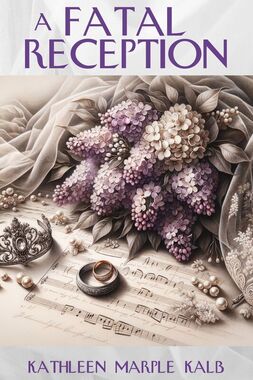
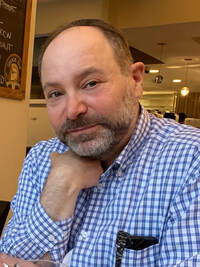
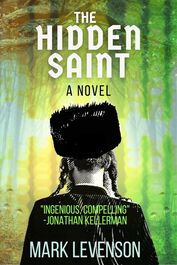

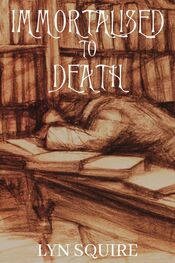

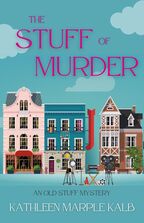

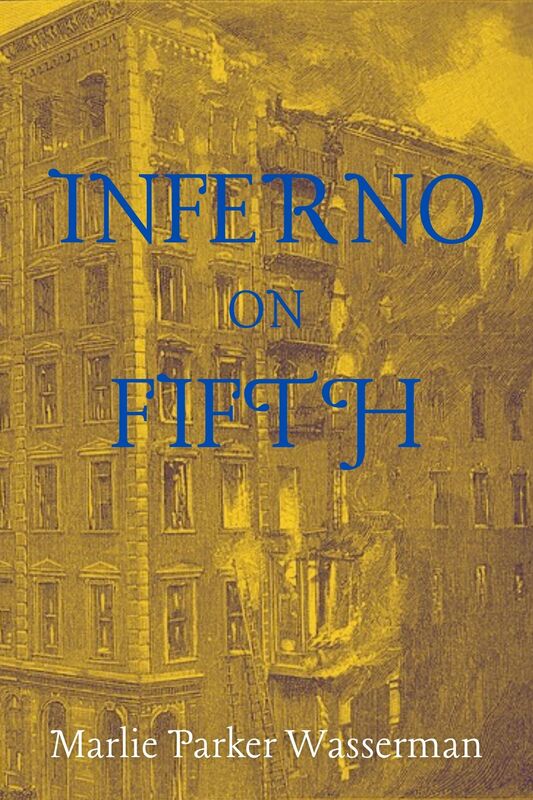
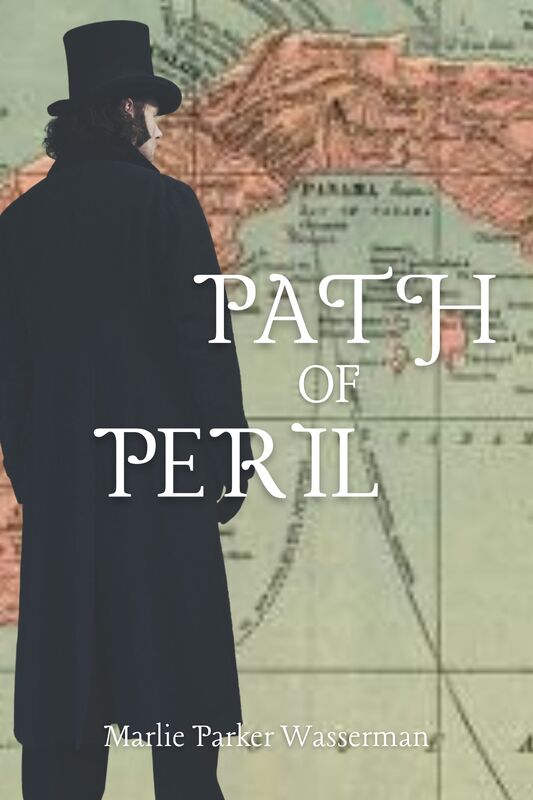
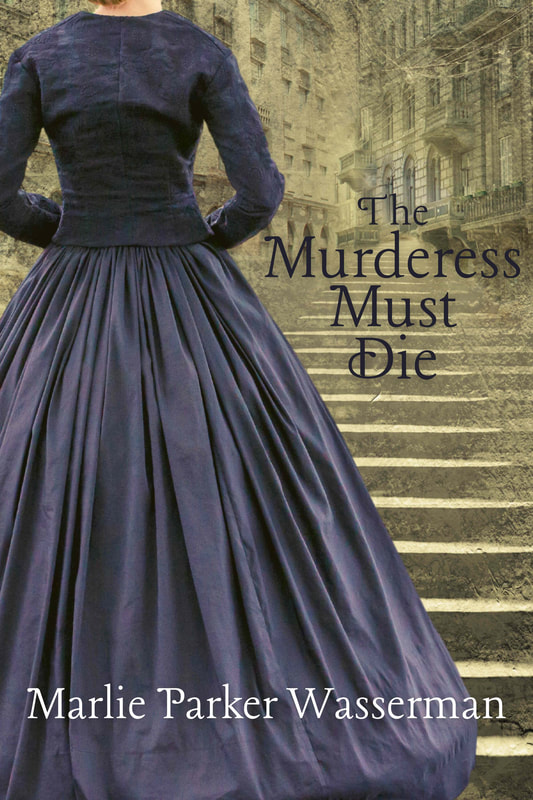
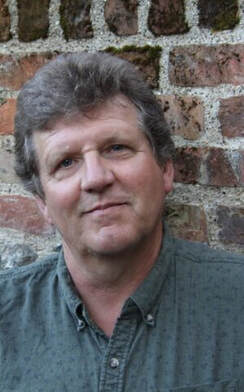
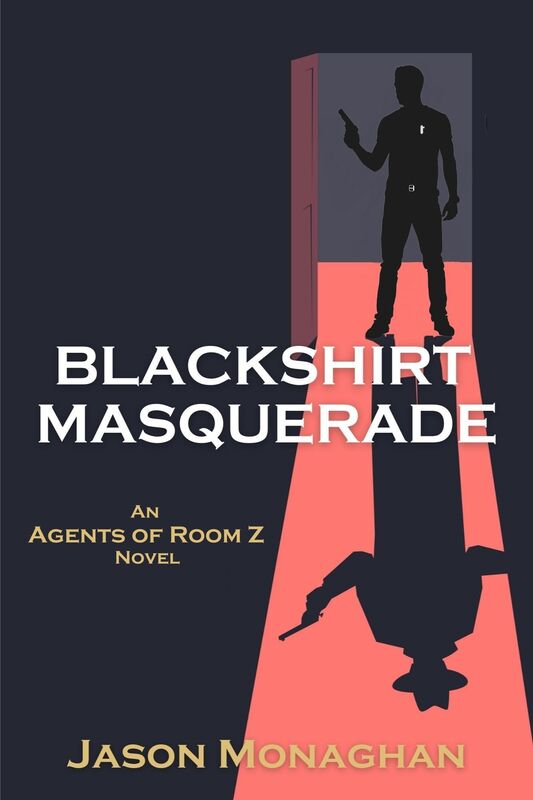
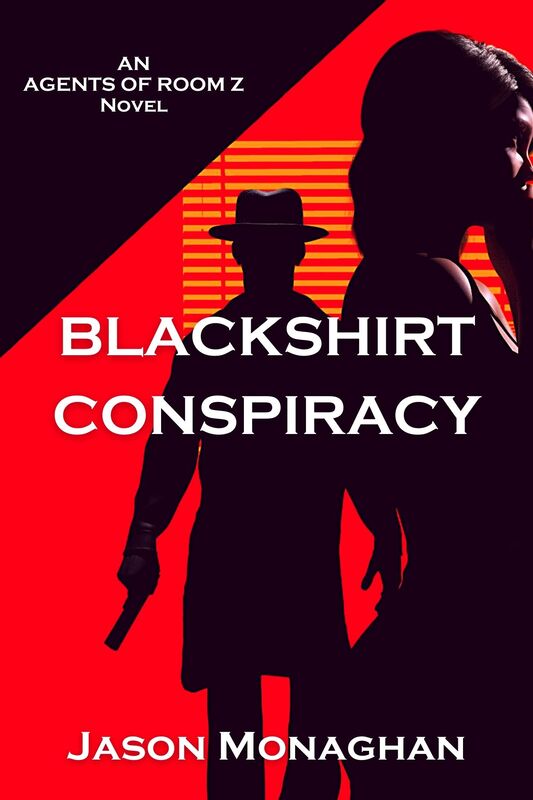
 RSS Feed
RSS Feed